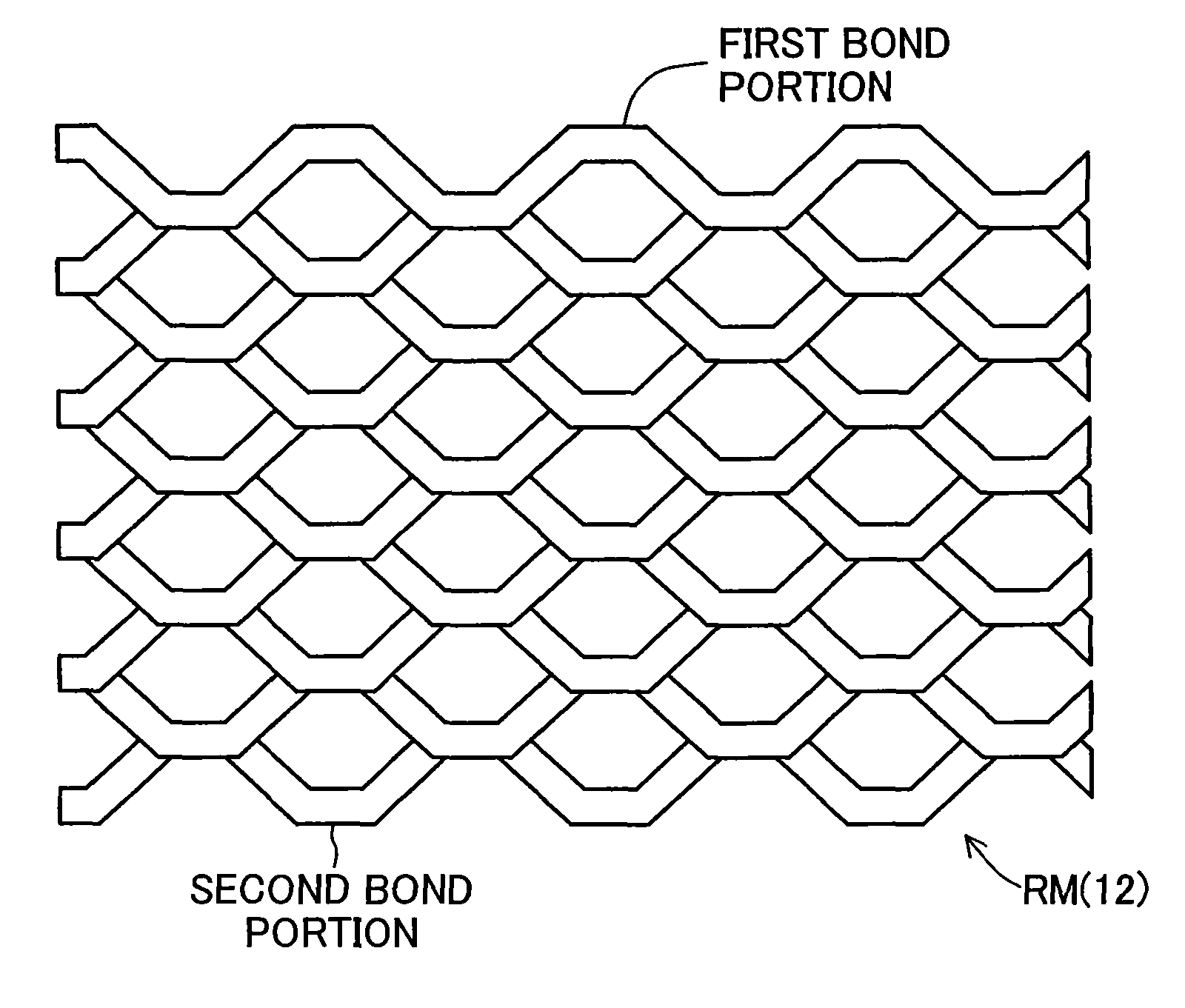Separator for fuel cell
a fuel cell and separator technology, applied in the direction of cell components, electrochemical generators, cell component details, etc., can solve the problems of inadequate gas supply efficiency and gas supply efficiency of conventional separators used in polymer electrolyte fuel cells, inability to adequately supply fuel gas and oxidizer gas, and inability to adequately balance gas supply efficiency and electricity collection efficiency. , to achieve the effect of increasing the flow of fuel gas or oxidizer gas and facilitating efficient collection of generated electricity
- Summary
- Abstract
- Description
- Claims
- Application Information
AI Technical Summary
Benefits of technology
Problems solved by technology
Method used
Image
Examples
first modified embodiment
[0070]As shown in FIG. 7A, through holes formed in the metal lath can each have, for example, a diamond shape (quadrangular shape). Next will be described a first modified embodiment which employs a metal lath having through holes each having a diamond shape. A metal lath RM′ having through holes each having a diamond shape (hereinafter, these through holes are called diamond through holes) is formed also by use of, for example, the lath machining apparatus A used in the above-described embodiment. However, in formation of the metal lath RM′, the upper blade UH of the blade stamp H differs in cutting-edge shape from the above-described embodiment.
[0071]Specifically, in the first modified embodiment, the cutting edge of the upper blade UH has a plurality of angular crests and angular bottoms (generally triangular shapes) corresponding to a diamond shape which is imparted to through holes to be formed. Also, in the first modified embodiment, the lath machining apparatus A operates as ...
second modified embodiment
[0079]In the above-described first modified embodiment, the collector 12′ is formed from the metal lath RM′ in which diamond through holes are formed in a meshy, step-like arrangement. In place of the metal lath RM′, a metal lath RM″ in which through holes each have a generally pentagonal shape can be employed. Next will be described a second modified embodiment which employs the metal lath RM″.
[0080]As shown in FIG. 9A, the metal lath RM″ of the second modified embodiment has through holes which each have a generally pentagonal shape and which are formed in a meshy, step-like arrangement (hereinafter, the through holes each having a pentagonal shape are called pentagonal through holes). This metal lath RM″ is formed also by use of, for example, the lath machining apparatus A. However, in formation of the metal lath RM″, the upper blade UH of the blade stamp H differs in cutting-edge shape from the above-described embodiment and first modified embodiment.
[0081]In the second modified...
PUM
| Property | Measurement | Unit |
|---|---|---|
| thickness | aaaaa | aaaaa |
| electrically conductive | aaaaa | aaaaa |
| area | aaaaa | aaaaa |
Abstract
Description
Claims
Application Information
 Login to View More
Login to View More - R&D
- Intellectual Property
- Life Sciences
- Materials
- Tech Scout
- Unparalleled Data Quality
- Higher Quality Content
- 60% Fewer Hallucinations
Browse by: Latest US Patents, China's latest patents, Technical Efficacy Thesaurus, Application Domain, Technology Topic, Popular Technical Reports.
© 2025 PatSnap. All rights reserved.Legal|Privacy policy|Modern Slavery Act Transparency Statement|Sitemap|About US| Contact US: help@patsnap.com



